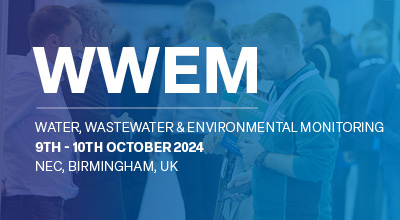| Abstract Title: | Measuring metaldehyde in surface waters in the UK using two monitoring approaches |
| Presenter Name: | Prof Graham Mills |
| Co-authors/Co-presenters: | Mr Glenn Castle Dr Adil Bakir Dr Anthony Gravell Dr Kate Snow Prof Gary Fones |
| Company/Organisation: | University of Portsmouth |
| Country: | United Kingdom |
Abstract Information :
Metaldehyde (C8H16O4) is the active ingredient in most proprietary forms of slug pellets used to protect crops and cereals. In the United Kingdom, it is estimated that 80% of arable farmers use metaldehyde, with approximately 1640 t being used in Great Britain between 2008 and 2014. Metaldehyde is generally applied to land in the autumn and winter months when molluscs thrive in the wet weather conditions. Metaldehyde is a polar (log Kow = 0.12 at 20°C) molecule being highly water soluble and mobile in soil. Once applied to land, it can runoff under wet conditions into field drains and surface waters. It is considered as emerging pesticide of concern. Concentrations fluctuate with the seasonal application of the molluscicide. Often the concentration of metaldehyde exceeds the European Union's Drinking Water Directive limit of 0.1 µg L-1 for any pesticide. A major concern is where such surface water bodies are used as capitation sources for potable drinking water supplies. Due its properties metaldehyde is difficult to remove from water using conventional drinking water treatment processes, such as granular activated carbon beds.
We describe the use of the Chemcatcher® for monitoring metaldehyde at two riverine catchments (River Dee (8 locations) and River Thames (6 locations)) over a twelve month period. Samplers were deployed (twenty-six consecutive 14-day periods) between 11th January 2016-11th January 2017 within the River Dee catchment and between 20th July 2016-20th July 2017 within the greater River Thames catchment. The performance of the device was evaluated alongside infrequent (every 14 days) spot water sampling. By undertaking a year-long investigation we were able to encompass the metaldehyde application period (August-December) at both locations. Metaldehyde was analysed in all samples using an on-line LC-MS procedure. This study was designed to enable a better understanding of the stochastic inputs of metaldehyde linked to rainfall events and application periods.
Complimentary data between the two monitoring approaches was obtained with both (time weighted average versus spot water sample concentrations) showing similar patterns in the variation in concentration of metaldehyde over the 12 month period. Regulatory exceedances were found frequently during the 'metaldehyde season' (1st August-31st December) in both catchments corresponding to increased stochastic inputs of metaldehyde into the surface waters. These increases in concentration were associated with higher rainfall events in the catchment. Data obtained from the use of the Chemcatcher® in these field trials has potential to be incorporated into river catchment management programmes and to provide improved cost-effective information for the future development of environmental remediation strategies.


